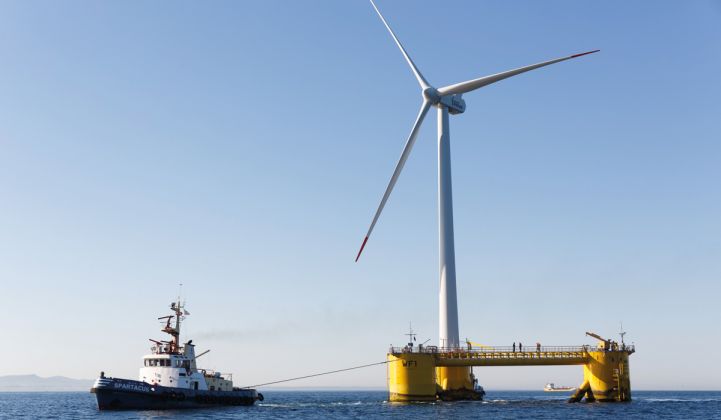Renewable energy development behemoth Macquarie is eyeing a floating turbine project in South Korea as interest in offshore wind grows across the Asia-Pacific region.
The developer is reportedly partnering with South Korea’s Gyeongbuk Floating Offshore Wind Power for a 1-gigawatt project located around 30 miles from Pohang and Ulsan.
Robert Liew, senior analyst for Asia-Pacific at Wood Mackenzie-owned MAKE Consulting, said the lack of details suggest the project is still in its early planning stages.
“It would be more likely to see the light of day if the developer announced it had received permitting for the project, as getting local consent is a major barrier for offshore wind,” said Liew.
Sunmi Kim, senior manager in charge of Macquarie’s media relations in South Korea, said there had been no official announcement regarding the partnership.
“Macquarie Capital Korea signed a memorandum of understanding with a partner to develop an offshore wind project in South Korea,” Kim said. “But there is no further information available at this stage.”
The potential Macquarie project is part of 4 gigawatts of offshore wind currently in the pipeline for South Korea.
The largest of these developments is a 2.5-gigawatt wind farm called Southwest, being built by Korea Offshore Wind Power, a subsidiary of Korea Electric Power Corp., the national utility.
The first phase of Southwest is a 60-megawatt test site comprising twenty 3-megawatt Doosan turbines mounted on suction bucket and four-leg jacket foundations.
Elsewhere, South Korea’s first offshore wind farm, a 30-megawatt project off the coast of Jeju, an island south of the mainland, has been operational since 2016. Most other offshore wind developments in South Korea are still in the initial planning phase, Liew said.
However, he noted: “The government has set an ambitious target of 18 gigawatts of wind capacity by 2030. And the only way to achieve this is via offshore wind, given its scale.”
The news of Macquarie’s plans for South Korea follows Taiwan’s first offshore wind allocation in April. The solicitation saw Taiwan calling for 3.8 gigawatts of capacity, beating analyst expectations.
It drew significant international interest from investors and developers because Taiwan has no major industry muscle to develop an offshore wind supply chain.
European suppliers have leapt to fill the breach. This month, for instance, Siemens Gamesa announced the financial close on a 120-megawatt project, Formosa 1 Phase 2, which will enter operation next year.
The project is being built by a consortium including Macquarie Capital, Ørsted and lead developer Swancor Renewable Energy.
It will see twenty Siemens Gamesa SWT-6.0-154 direct-drive wind turbines being installed alongside the two 4-megawatt machines that make up Formosa 1 Phase 1.
Overall, the Taiwanese government is looking to install 520 megawatts of offshore wind capacity by 2020, with a further 5.5 gigawatts being added by 2025.
“These ambitious targets demonstrate the proactive commitment of the government to supporting the offshore wind industry in Taiwan,” said Andreas Nauen, Siemens Gamesa’s offshore CEO, in a press release.
The original equipment manufacturer is also investing in a training center in the central Taiwanese city of Taichung, in partnership with the Taiwan International Windpower Training Corporation.
Taiwan’s targets are ambitious for an early offshore market, but they are puny compared to nearby China.
MAKE estimates China, which is already a world leader in offshore wind, will have installed almost 28 gigawatts by 2027, more than twice the capacity of the next largest market in the world, the U.K.
In its first-quarter 2018 Global Wind Power Market Outlook Update, MAKE said: “China’s offshore sector will mature quickly, free from the transmission constraints plaguing traditional onshore wind bases.”
Annual capacity additions would exceed 3 gigawatts a year from 2022 through 2027, said the analyst firm.
Meanwhile, offshore wind would make up more than 25 percent of new capacity in Japan and South Korea over the next 10 years, and “a staggering 96 percent of new capacity for Taiwan,” MAKE said.




